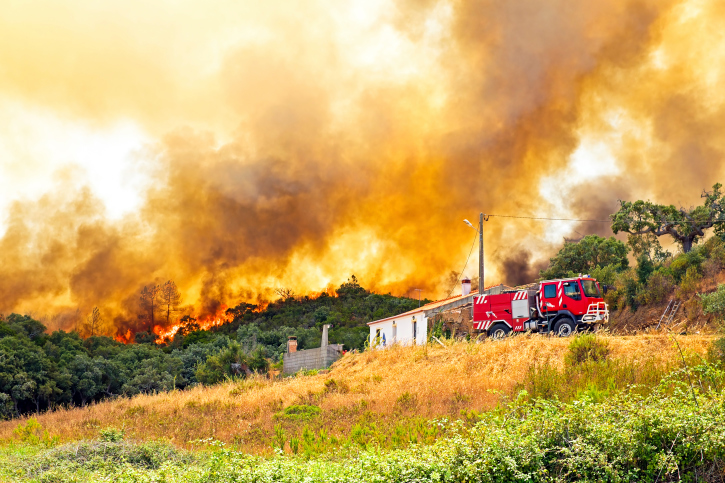Western states have faced severe wildfire seasons in recent years. This year was no exception, prompting officials in many states to bemoan the growing threats wildfires pose to the environment and economy. A multi-year drought in the region has resulted in 14 wildfires scorching more than 183 square miles of timber and brush along the borders of California and Oregon.
Amid the destruction and millions of dollars spent, officials are analyzing how best to reduce and fight the number and severity of wildfires, including logging as an option.
Senate Wildfire Hearings
On July 15 the U.S. Senate Energy and Natural Resources Committee held a hearing on wildfires and pending legislation that would reform funding for wildfire suppression.
The “Wildfire Preparedness & Forest Service 2015 Fiscal Year Budget” hearing featured legislators, officials from local forestry departments, and federal land managers. It highlighted two pending bills addressing funding: the FLAME Act Amendments of 2014 (S.2593) and the Wildfire Disaster Funding Act (S.1875).
Catastrophic “mega-fires” make up only 1 percent of wildfires but take up nearly 30 percent of the entire fire suppression budget. The FLAME Act Amendments of 2014 would prohibit federal agencies from dipping into the fire prevention funds to fight emergency fires, known as “fire borrowing.” The bill also redirects more funds to hazardous-fuel reduction projects and provides financial incentives to undertake more active forest management plans which could include logging, brush clearing and reforesting.
The Wildfire Disaster Funding Act would create a special disaster fund to fight specifically to fight “mega-fires”. This fund would curtail the raiding fire prevention funds to pay for emergency firefighting efforts.
“The Nature Conservancy supports the Wildfire Disaster Funding Act in the House [H.R. 3992] and Senate. This bill is a budget fix for the Interior appropriations bill that would fund fires that are disasters in the same way as other natural disasters,” said Cecilia Clavet, a senior policy advisor at the Nature Conservancy.
State Officials Advocate Logging
Some officials are advocating allowing logging to thin forests in order to reduce the number of fires.
In California, in the aftermath of the Rim Fire, which blackened 400 square miles of the Stanislaus National Forest, Susan Skalski, supervisor of the Stanislaus National Forest, proposed logging trees destroyed by the fire.
Her proposal, finalized on August 28, has environmental groups upset about the approval of 24 square miles of burned mountain range for logging. In addition, logging would be permitted on 28 square miles along roads over which trees are expected to fall and threaten safety.
The California Forestry Association commended the U.S. Forest Service for putting together a sound Environmental Impact Statement in an open and transparent process.
“Our members are eager to see treatments implemented that help restore the burned areas of the forest and that reduce threats to public safety posed by the standing dead trees created by the fire,” President David Bischel said in a statement.
“The Conservancy also supports increasing forest management activities, like restoration, that help improve forest health and reduce the risk and costs of wildfires. Fixing the fire funding portion of wildfires through the Wildfire Disaster Funding Act will allow for more restoration activities to take place,” Clavet said.
Alyssa Carducci ([email protected]) writes from Tampa, Florida.




